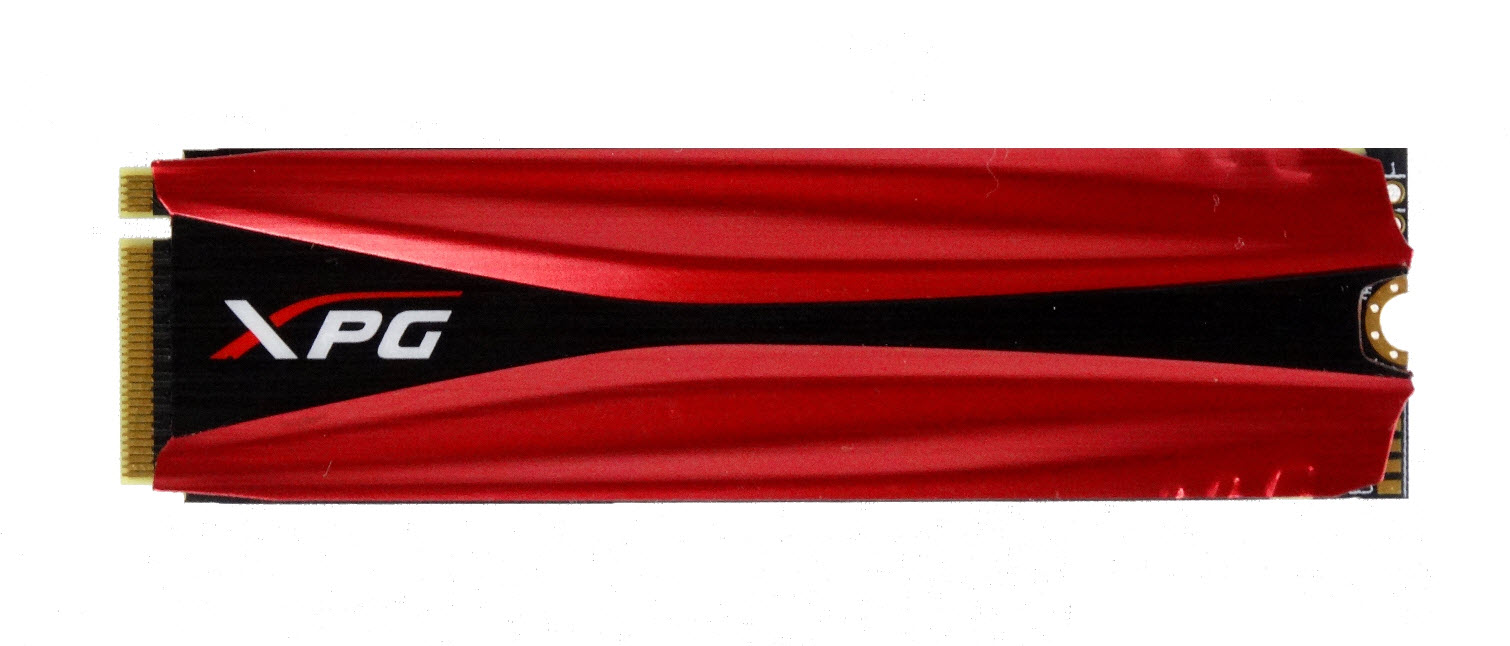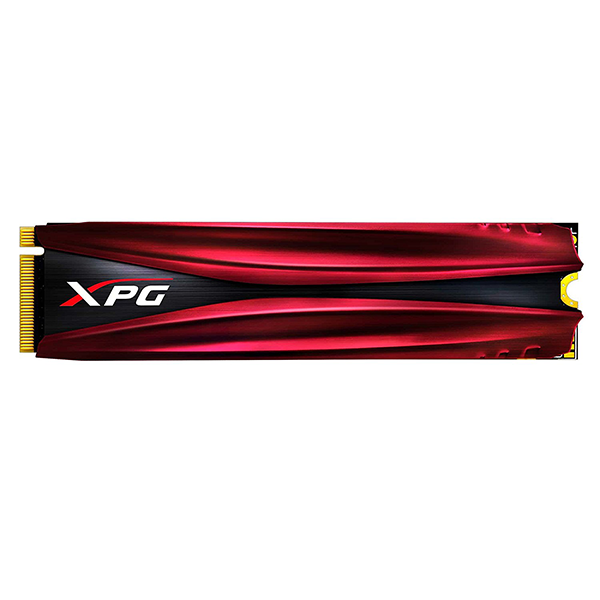Early Verdict
The Adata XPG Gammix S10 is a blessing for users with light workloads. The S10's performance is better than what SATA can deliver, and for many, the low performance state will never come into play. We really like this drive's price point, but it's only for systems with light workloads.
Pros
- +
Low cost
- +
Better than SATA performance until you push it
- +
Attractive design
- +
A strong general-use SSD
Cons
- -
Low delta to degraded performance state
- -
The low performance is noticeable when pushed
- -
Ineffective heatsink design
Why you can trust Tom's Hardware
Features & Specifications
The Adata XPG GAMMIX S10 features a stunning heatsink design that is more form than function. Under the pretty veil is an entry-level NVMe SSD that is similar to Intel's 600p, which is one of the most popular NVMe SSDs on the market. The XPG GAMMIX S10 doesn't share the 600p's low price, and that's the reason for the Intel SSD's popularity. Will the S10's additional cooling be enough to attract buyers to the XPG line?
We are well into the point of known brands targeting "gamers" and the gaming subculture. Several companies have built sub-brands and even spun them off into new entities. For instance, Kingston once used HyperX as a part of its product stack, but later it spun the vaunted HyperX name off into a separate division. The Adata XPG line is much like the HyperX series back when it was just a set of specialized products. XPG has started to venture out as a brand, but most of us still know them as Adata because you find them on Adata's website. Resellers also still identify and list new models under the Adata name.
Adata, or XPG depending on which side of the marketing department you are on, offers a few products under the GAMMIX name. Adata splits the line into the GAMMIX S10 SSDs we're testing today and the system memory that sells under the GAMMIX D10 name. The website images show two different colors for the products. The GAMMIX S10 SSD appears more maroon while the D10 memory looks red, but there is also a black version of the memory. The two red colors are close enough to complement each other in the same desktop PC, though.
Consumer SSDs were essentially born at system memory companies. The small memory companies were the first to gamble on expensive storage devices for wealthy computer users. But the smaller companies went away over time. The small companies were absorbed by larger ones, or they scaled back their products due to the flash shortage that has plagued the industry for a few years.
There are very few paired SSD and memory products from the remaining players. The XPG GAMMIX products are one of the only series that still pairs the SSD and memory lineup. Not everyone cares about color-matching components, but some do. For them, this is one of the few options left.
Specifications
The GAMMIX S10 sells at Amazon in four capacities. The series starts at 128GB and scales to 1TB of user-addressable capacity. The raw capacity is much higher due to the use of Micron's 384Gbit (48GB) NAND memory. The non-standard die capacity forces Adata to run the Silicon Motion SM2260 dual-core controller in six-channel mode even though it is an eight-channel controller.
The 128GB drive actually features 144GB of raw NAND. Adata dedicates 8GB to a fixed-size SLC buffer and reserves the rest for bad block management and background activity. The SLC buffer and the reserved space increases with each capacity. The GAMMIX S10 also uses the DRAM as a cache to increase performance and complement the SLC cache on the NAND.
Get Tom's Hardware's best news and in-depth reviews, straight to your inbox.
The drive comes with a double-sided M.2 2280 form factor. The early notebooks only accepted single-sided SSDs, but modern notebooks shouldn’t have an issue with double-sided SSDs. The heatsink is thin enough that most notebooks will not have an issue accepting the GAMMIX S10 due to the increased Z-height, but there are likely rare cases that we're not currently aware of. Desktop users will not have an issue. There is enough room between the drive and a PCIe card, such as a video card, to accommodate the increased thickness.
Performance varies between the different capacities. The GAMMIX S10 128GB, the smallest model, boasts 660/450 MB/s of sequential read/write throughput. The 1TB model shoots up to 1,750/850 MB/s of sequential read/write throughput. The 512GB model sports an additional 10MB/s of sequential write speed, but otherwise, it is identical to the other models.
Features
- PCIe Gen3x4 interface
- NVMe 1.2 qualified
- 3D NAND
- M.2 2280 form factor
- Intelligent SLC Caching and DRAM Cache
- Supports LDPC ECC
- RAID Engine and Data Shaping for Enhanced Data Protection
Pricing, Warranty & Endurance
The Adata XPG GAMMIX S10 starts out at just $67.50 for the 128GB model. The 256GB S10 is $97.50 but is a better value overall due to the reduced price-per-GB and the increased performance. The $164.99 512GB model is the best buy for most of us because it delivers the highest performance in this series. That's a big increase in the price per gigabyte, though, but dense NAND packages are expensive. If you plan to rob a bank, or at least a busy gas station, Adata offers the 1TB model for $479.99.
Packaging
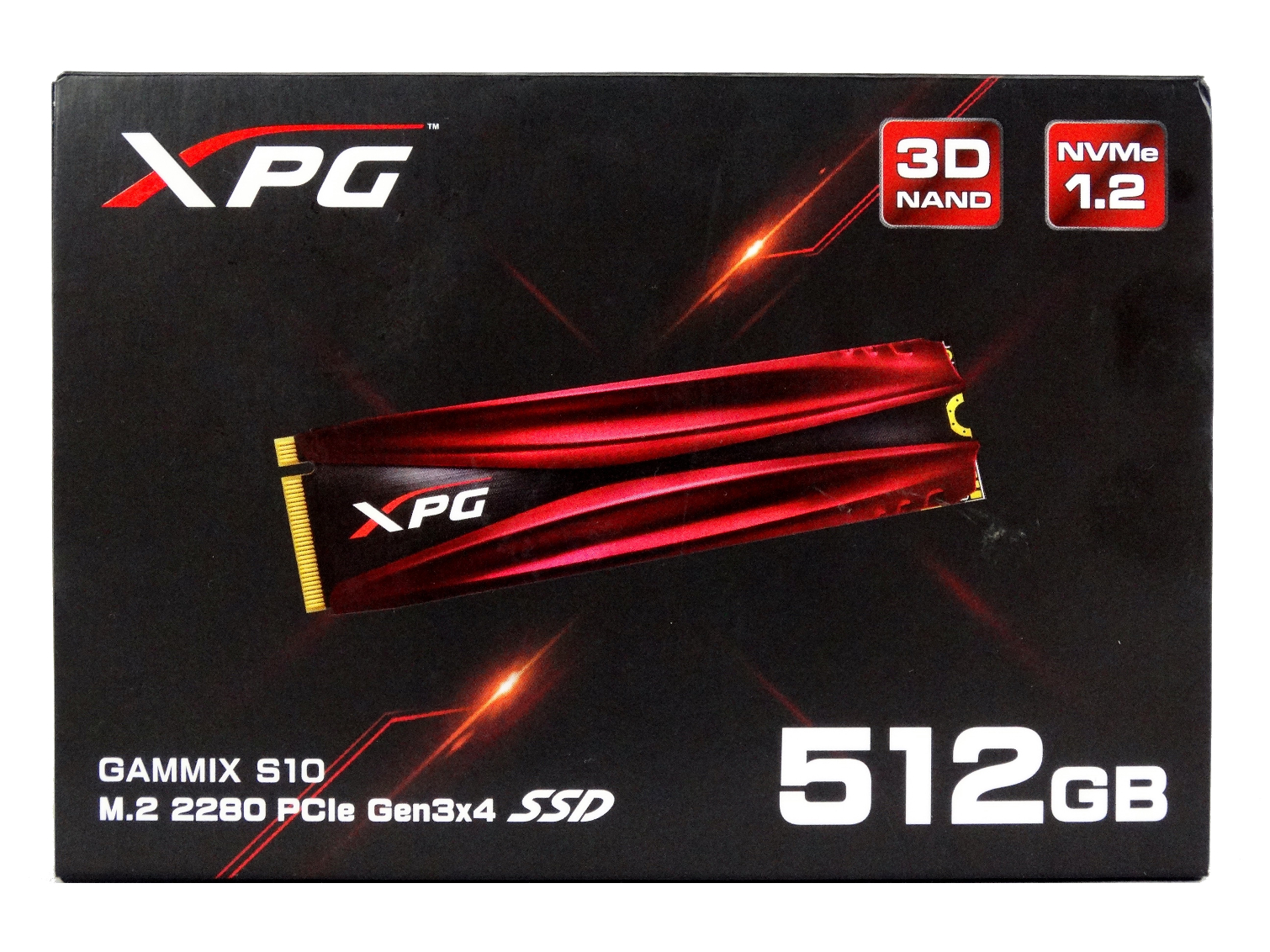
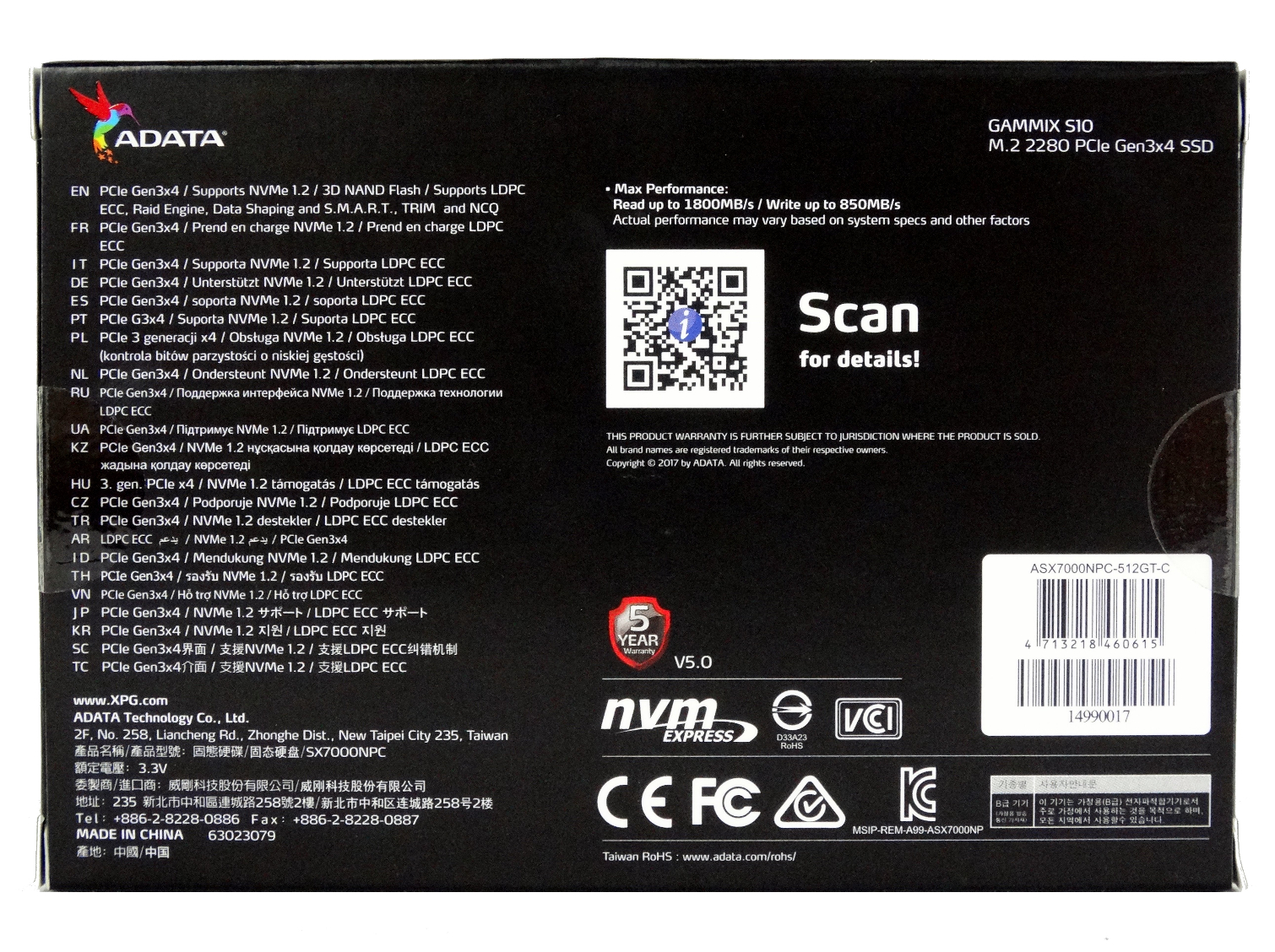
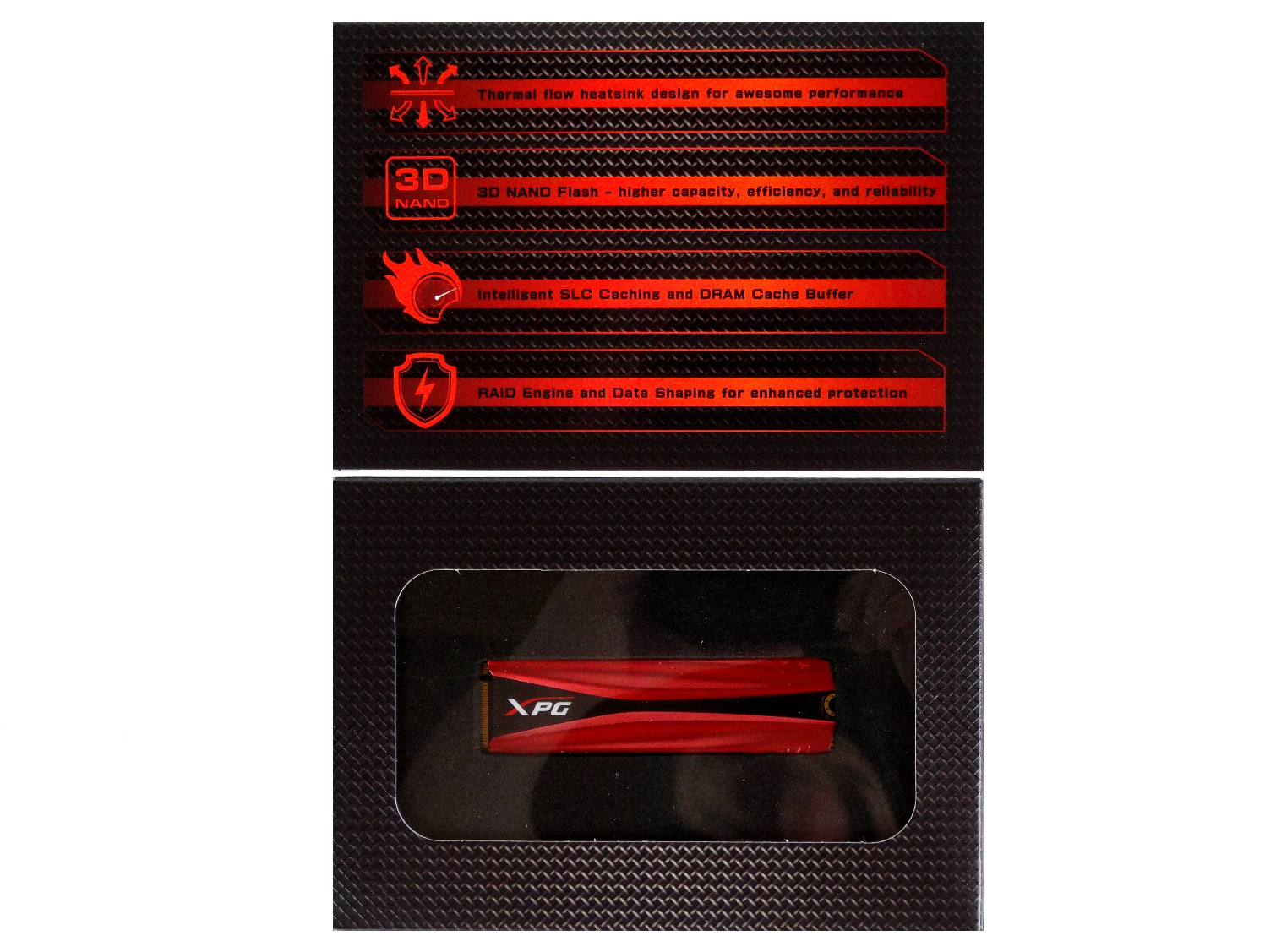
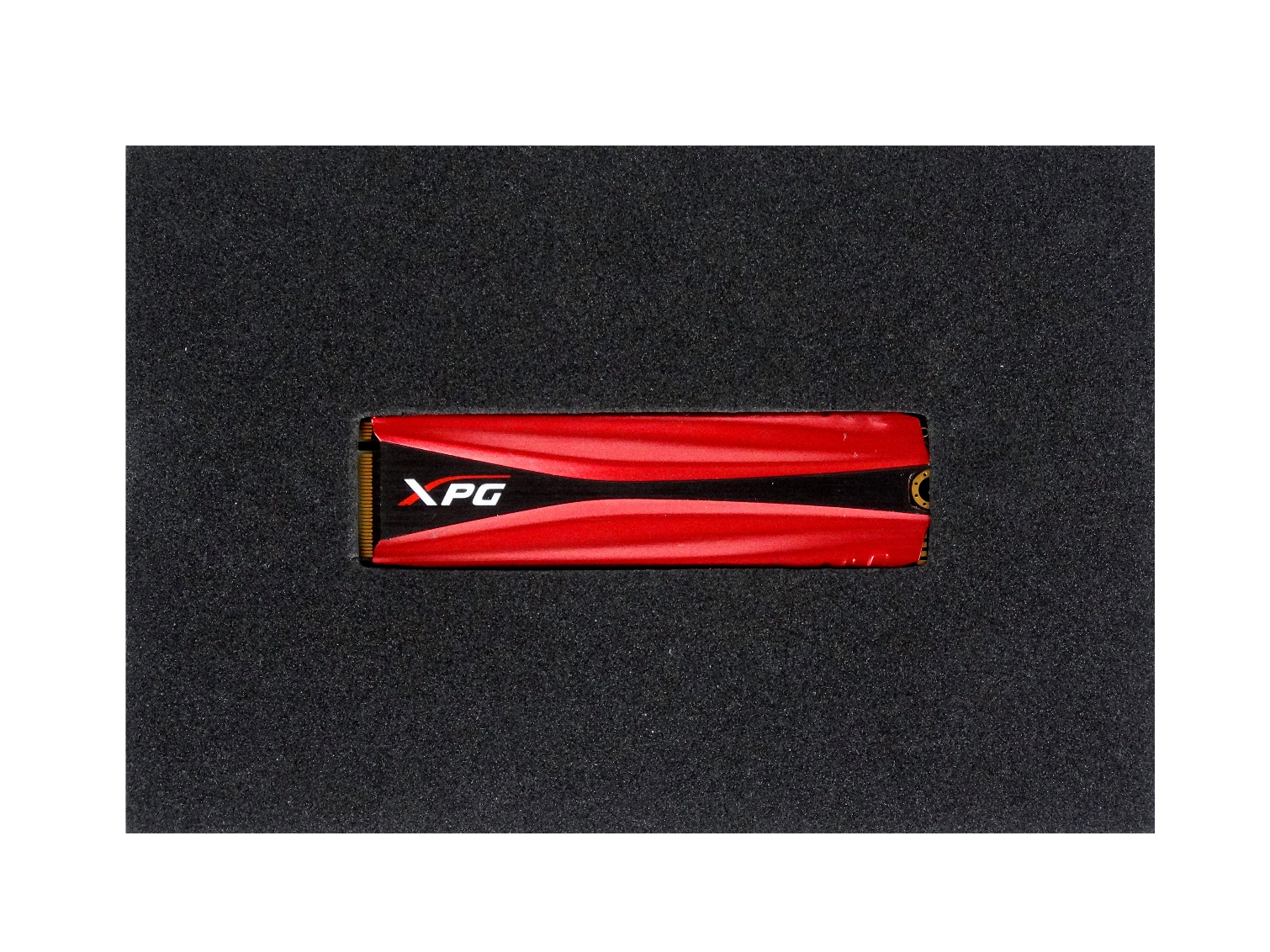
Adata put together an excellent looking package for the GAMMIX S10, but it falls short without performance specifications. The company does list all of the features and technology. You can even open the top cover and see the drive through a window, which is good if you're shopping in a retail store.
A Closer Look
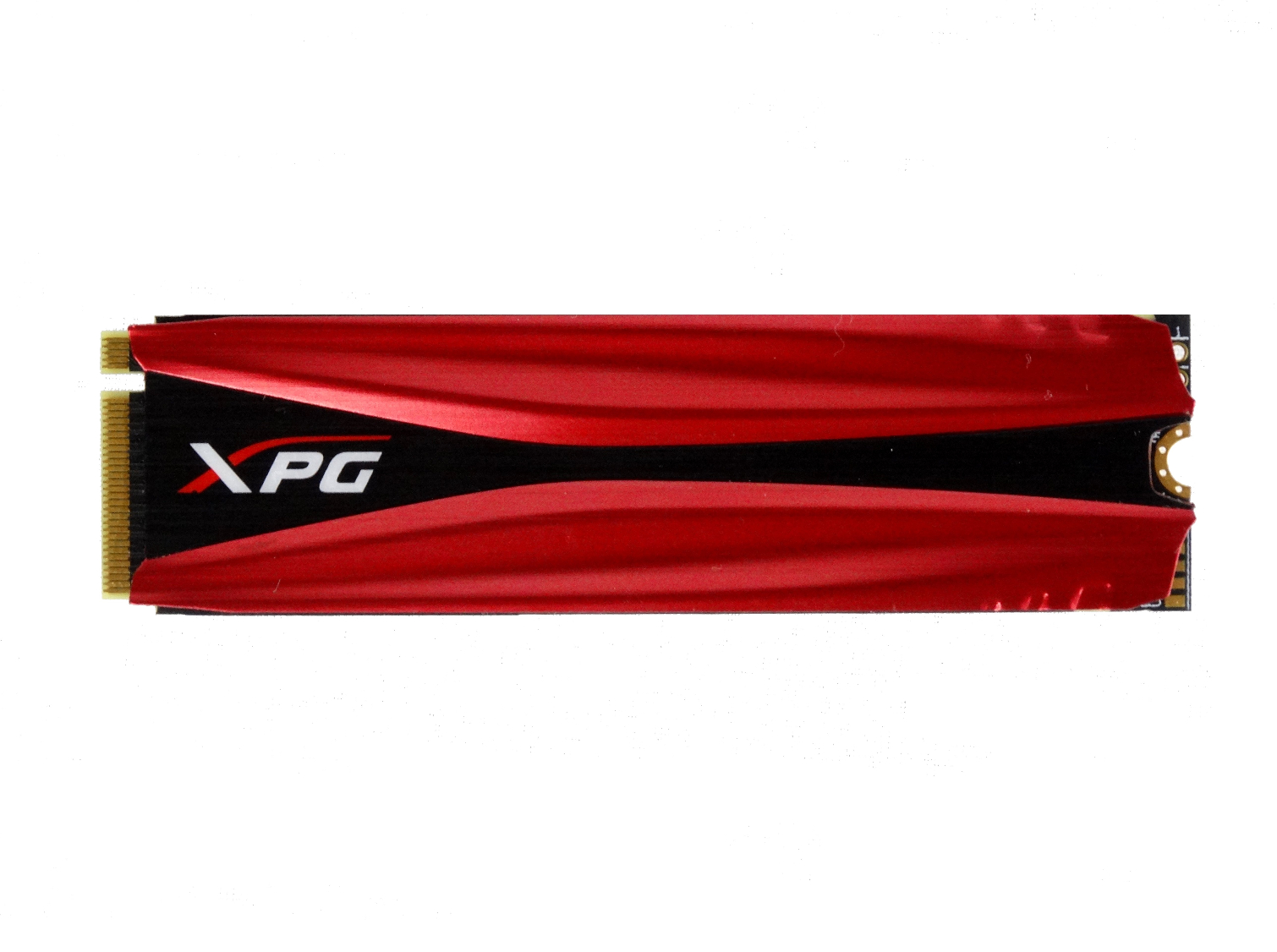
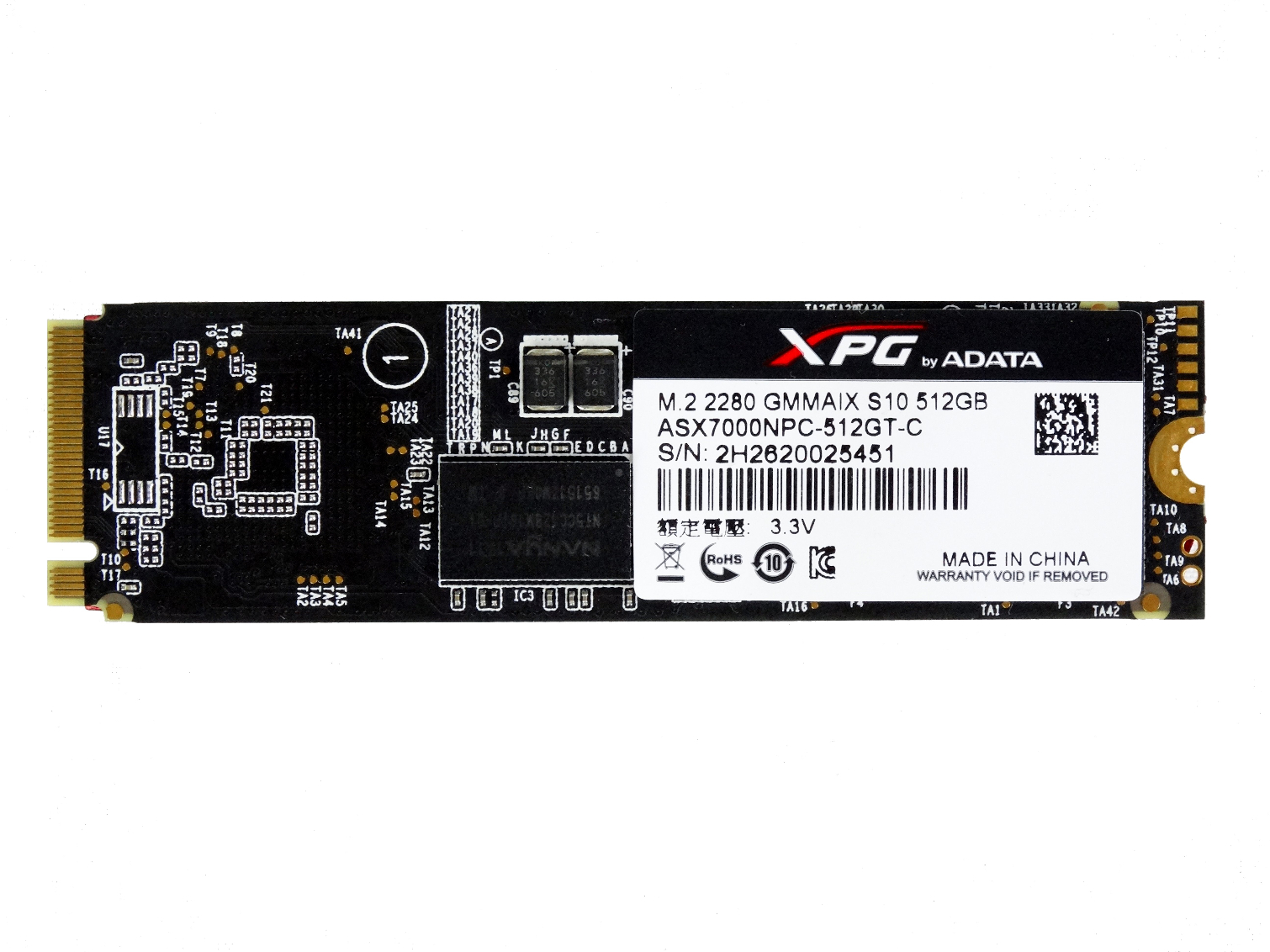
You can see one side of the drive when its installed on your motherboard, and it looks great! The other side looks like a regular M.2 SSD, but you can't see it. The cooler looks great, but it is more for form than function.
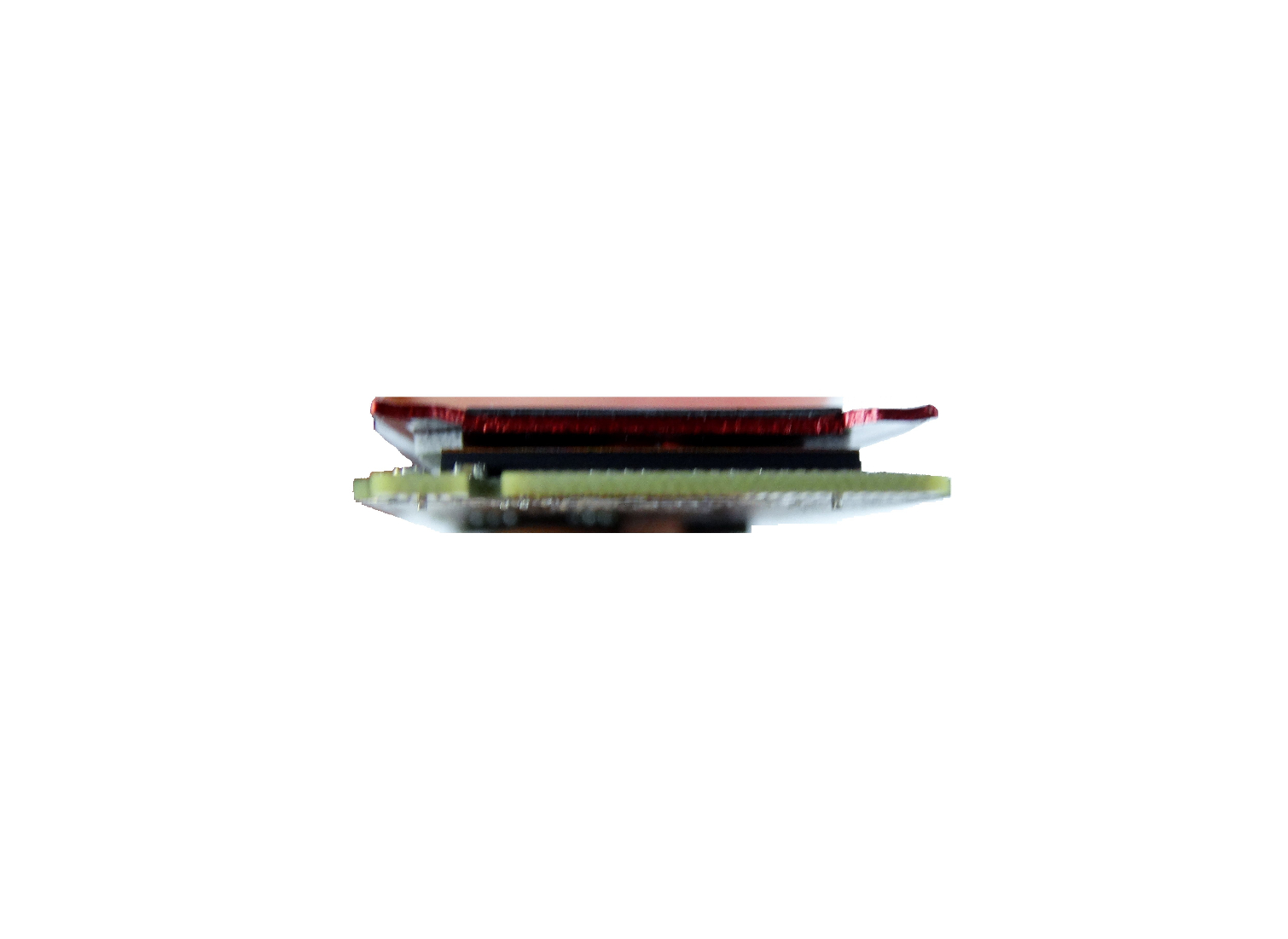
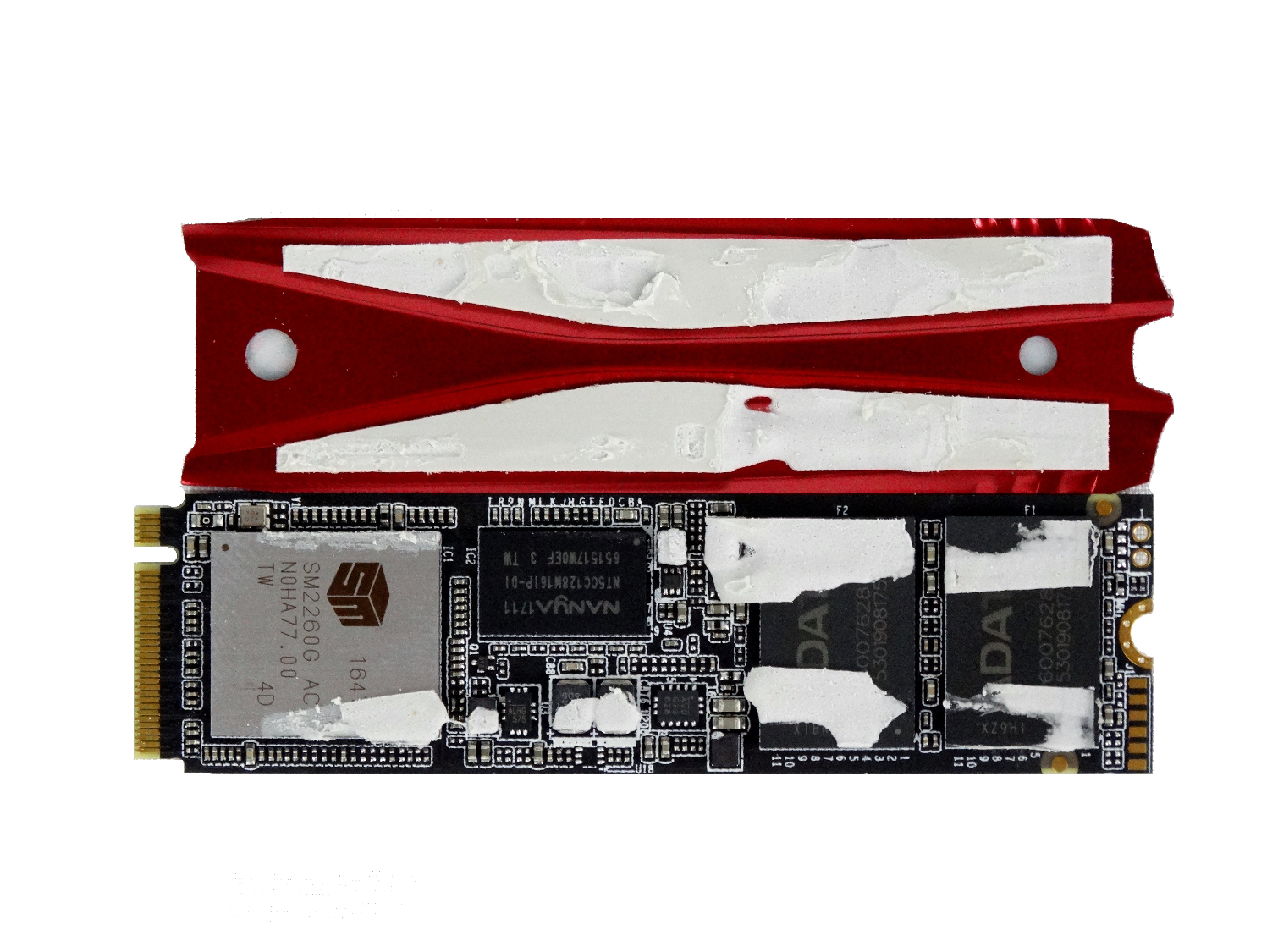
Even though Adata claims a 10C reduction in the controller temperature, the cooler is less efficient than it should be. The thermal conductive pads just graze the controller and miss the hot spot in the middle of the package where the actual processor sits.
MORE: Best SSDs
MORE: How We Test HDDs And SSDs
MORE: All SSD Content

Chris Ramseyer was a senior contributing editor for Tom's Hardware. He tested and reviewed consumer storage.
-
AgentLozen In the right context with the right mindset this is a decent SSD. If you're a frequent reader of Tomshardware, it's probably not for you. Maybe your kid would appreciate it with that flashy heat sink and all.Reply
edit: a few words -
Verrin Reply20725992 said:Why are people making/buying 120GB SSDs?
240GB is the bottom floor IRL.
I'm confident you already know the answer to that. Cost is the ultimate limiting factor, and as long as there is demand for smaller capacities due to the budget constraints of others, 120/128GB SSDs will continue to exist. And it seems clear that people still find them plenty functional, or else they wouldn't be buying them.
-
R_1 Reply20726329 said:20725992 said:Why are people making/buying 120GB SSDs?
240GB is the bottom floor IRL.
I'm confident you already know the answer to that. Cost is the ultimate limiting factor, and as long as there is demand for smaller capacities due to the budget constraints of others, 120/128GB SSDs will continue to exist. And it seems clear that people still find them plenty functional, or else they wouldn't be buying them.
I love a small SSD, I use DATAPLEX, however without the software a 120GB is less than useful for an enthusiast PC.
to me it was a waste of the reviewers time I am only glad they got paid for it
the results were known by anyone who has ever read more than the article titles here before the review
120GB is half the speed of a 240. again why the review? -
daglesj 120GB are fine for stuffing in Office machines and laptops for light use. Sometimes you don't need or want to have masses of data stored on machines, you just want speed of daily tasks. 60GB is often fine for machines that do Word or Excel all day.Reply -
mischon123 They grabbed bottom of the barrel chips and cover the mess with a big red piece of airflowkilling plastic. Tom`s propaganda unit then writes lipstick on the pig.Reply -
HERETIC-1 MISCHON-I think you are being very unfair to Chris-He writes it as he sees it,and I think he was spot on....Reply
Chris,what do you think the reason is for Samsung's poor performance in mixed read/write? Seems the only area they fall down. -
CRamseyer Reply20727041 said:They grabbed bottom of the barrel chips and cover the mess with a big red piece of airflowkilling plastic. Tom`s propaganda unit then writes lipstick on the pig.
I don't remember writing in lipstick. What color was it? The testing shows the product in a very clear light. -
ev3rm0r3 I don't understand why my 961 m.2 256gb stick from 2 years ago still outperforms all of these listed 2:1. I can hit read/writes considerably higher even for a 256gb model. As far as the 120gb model, honestly from day one I've always separated my OS from the installs/media/gaming drives I use. You get much better performance breaking up your os from your read/write/float from other software/media that way. So if you throw windows even onto a 60gb ssd m.2 you will still be under-reaching its max performance while having all your installs on a much bigger m.2 preferably for the installs.Reply
I would say on laptops you would be confined to just 1 m.2 but that's not the case anymore either so you can easily still split your load on a laptop between 2 drives in the same manner. I don't think I'll ever host my os on my main drive that shares everything. That's too much risk of total loss if that one drive fails. And yes its more then a practical setup. It's not really an argument.
